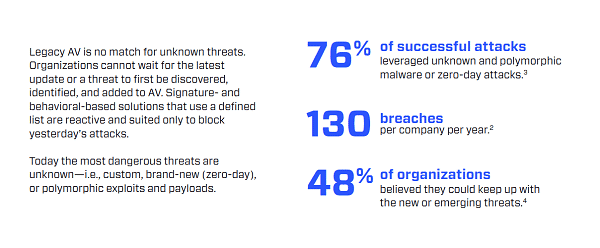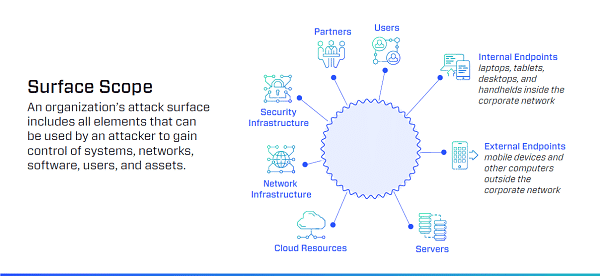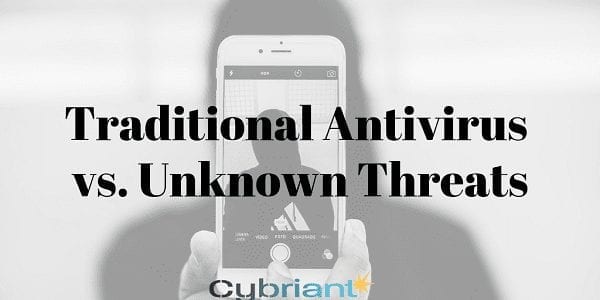Hackers and cybercriminals have quickly outpaced traditional enterprise antivirus tools. Endpoint detection and response (EDR) security tools provide antivirus features but can help protect an organization’s modern attack surfaces.
Legacy enterprise antivirus also fails to accommodate the modern enterprise’s IT environment. In the heyday of antivirus solutions—not coincidentally also the earliest days of computers—few business processes relied on digital actions or interconnectivity to function optimally. Enterprises didn’t have a digital network perimeter to protect, as endpoints were generally treated and managed individually. Enterprise antivirus solutions were installed on each endpoint with no central administration and were then forgotten about until it was time for their renewal.
As more enterprises undergo a digital transformation—becoming digitized and taking advantage of new online business programs such as cloud storage—the more the decentralized cybersecurity protocol fails to properly secure the IT environment. With the introduction of the mobile revolution and the remote employee—not to mention the increase of computers in everyday enterprise interactions and business processes—the enterprise’s IT perimeter is constantly expanding.
A digital perimeter of this size can be assailed from multiple entryways and attack vectors simultaneously, requiring a consistent and coordinated cybersecurity platform to ensure the highest level of protection. Endpoint security can provide centralized security that compiles security alerts from throughout the IT environment and updates every endpoint’s cyber-protection simultaneously. Only with this cybersecurity can your IT security team be aware of what threats are assailing your enterprise and from where.
In the battle of endpoint security vs legacy antivirus, the former certainly proves superior to the latter for enterprises looking to secure their endpoints against modern hacking tools and tactics.
Many organizations are not comfortable removing their antivirus product completely. Very often, clients will utilize managed EDR security services to determine just how much their current AV has missed. Managed EDR Security solutions can typically augment or replace traditional antivirus security solutions. You’ll have the ability to detect and prevent hidden exploit processes that are more complex than a simple signature or pattern and evade traditional antivirus. Gartner coined the term EDR back in 2013.
Read more, “7 Reasons You Need Managed EDR Security”
Enterprise Antivirus: Unknown Threats
An enterprise’s attack surface is complex and ever-changing, and that’s partly because of the constantly evolving modern threat landscape.
Many successful modern cyber attacks stem from previously unknown threats. Because legacy enterprise antivirus solutions often only block known attacks, they are being rendered increasingly ineffective.
Modern organizations will need to be prepared to combat unknown threats with proactive, preventive technology. With the power of AI, unknown attacks can be identified and stopped before they cause harm, actively reducing the enterprise attack surface and saving a business both time and money.
Do you have a handle on the vulnerabilities attackers are increasingly pursuing, and what it takes to protect them?

Legacy enterprise antivirus is no match for unknown threats. Organizations cannot wait for the latest update or a threat to first be discovered, identified, and added to AV. Signature- and behavioral-based solutions that use a defined list are reactive and suited only to block yesterday’s attacks. Today the most dangerous threats are unknown—i.e., custom, brand-new (zero-day), or polymorphic exploits and payloads.
Read More: Traditional Antivirus vs. EDR
To stay ahead of attackers, organizations need dynamic, proactive security that can identify previously unknown threats and harmful payloads before they can execute.
Other common attack surface tactics and how to defend against them
Memory Exploits: Potential file executions from possible unknown malware need to be analyzed in milliseconds before executing in the computing device’s memory. A malicious payload may begin with a benign operation to fool security measures. Analysis should be rapid and deep enough to see downstream malicious actions.
Unauthorized Applications: Application control capabilities are a must as the next line of defense on purpose-designated servers and fixed-function devices. These need constant monitoring to prevent unauthorized apps from running or unauthorized use of a system.
Cloud Assets and Infrastructures: The cloud must not be a weak link in your attack surface. Cloud environments need to be protected from misconfiguration. The same security from on-prem resources must be extended to the cloud to provide consistent protection.
Using an AI-driven EDR solution, Cybriant offers a Managed EDR service that delivers self-contained, automated, machine-learning threat detection modules which uncover threats that would be nearly impossible to find with static behavior rules.
Enterprise Antivirus: Replace with EDR
There is no doubt that organizations stand to benefit from EDR technologies, which enable faster response and remediation of security incidents. According to 451 Research, the right EDR components can greatly augment and complement existing prevention-based security postures. Read the 451 Research report: Expanding Machine Learning Applications on the Endpoint.
Keep pace with the threat landscape. Modern attacker tactics, techniques, and procedures (TTP) are quickly outpacing legacy antivirus products, rendering them less effective over time. The same will hold for EDR solutions that rely on rules alone. See how AI-powered EDR compares with the traditional EDR approach.

An organization’s attack surface includes all elements that can be used by an attacker to gain control of systems, networks, software, users, and assets. As much as 97% of all malware now uses a polymorphic technique to avoid detection by legacy AV. 1 The attack surface is constantly changing — new users, new systems or software, network changes, and security changes. To gain access, an attacker will look to exploit the weakest link in the attack surface. In an ideal world, security teams would simply reduce their attack surface to virtually zero. However, in today’s hyperscale enterprise environment, where new assets are added as demand dictates, it’s unrealistic to assume that enough action can be taken by the IT team to achieve this.
Attackers Seek the Weakest Link
Organizations want to minimize their attack surface, but realize that the attack surface is constantly growing and changing. Legacy AV is no match for unknown threats. Organizations cannot wait for the latest update or a threat to first be discovered, identified, and added to AV. Signature- and behavioral-based solutions that use a defined list are reactive and suited only to block yesterday’s attacks.
Today the most dangerous threats are unknown—i.e., custom, brand-new (zero-day), or polymorphic exploits and payloads.
To stay ahead of attackers, organizations need dynamic, proactive security that can identify previously unknown threats and harmful payloads before they can execute. It’s time to focus on the bigger picture. An organization’s attack surface is the total sum of all vulnerabilities in a device or network that an attacker can exploit to gain access and compromise the system or environment.
The aim is to keep the attack surface as small as possible and to actively manage all potential areas of vulnerability. But in today’s hyper-scale enterprise environment, where new assets are added as business demand requires, the strategy for managing the attack surface has become ever more unwieldy. Here, we review some of the considerations and best practices for managing your attack surface. Potential file executions from possible unknown malware need to be analyzed in milliseconds before they have an opportunity to execute in the computing device’s memory. A malicious payload may begin with a benign operation to fool security measures. Analysis should be rapid and deep enough to see downstream malicious actions. Application control capabilities are a must as the next line of defense on purpose-designated servers and fixed-function devices. These need constant monitoring to prevent unauthorized apps from running or unauthorized use of a system.
The cloud must not be a weak link in your attack surface. Cloud environments need to be protected from misconfiguration. The same security from on-prem resources needs to be extended to the cloud and provide consistent protection.
Reduce Your Attack Surface with AI-Driven Security Solutions
It’s time to say goodbye to traditional EDR approaches that don’t actively reduce risk and are only capable of slowly reacting and responding to attacks after they’ve been executed.
With evolved, AI-driven Managed EDR security, you will reduce the overall volume of security alerts and cut down on the amount of time required to remediate.


